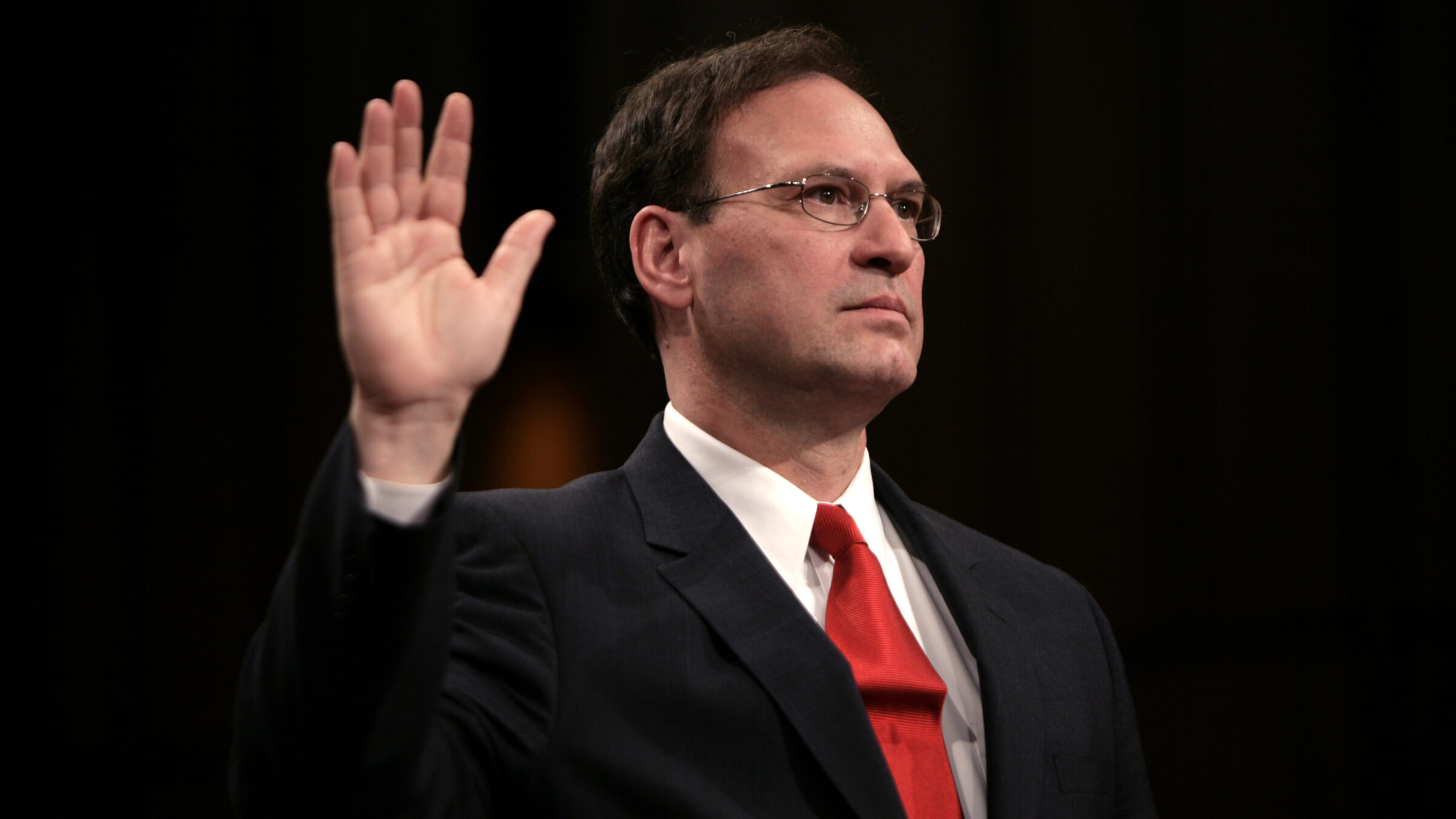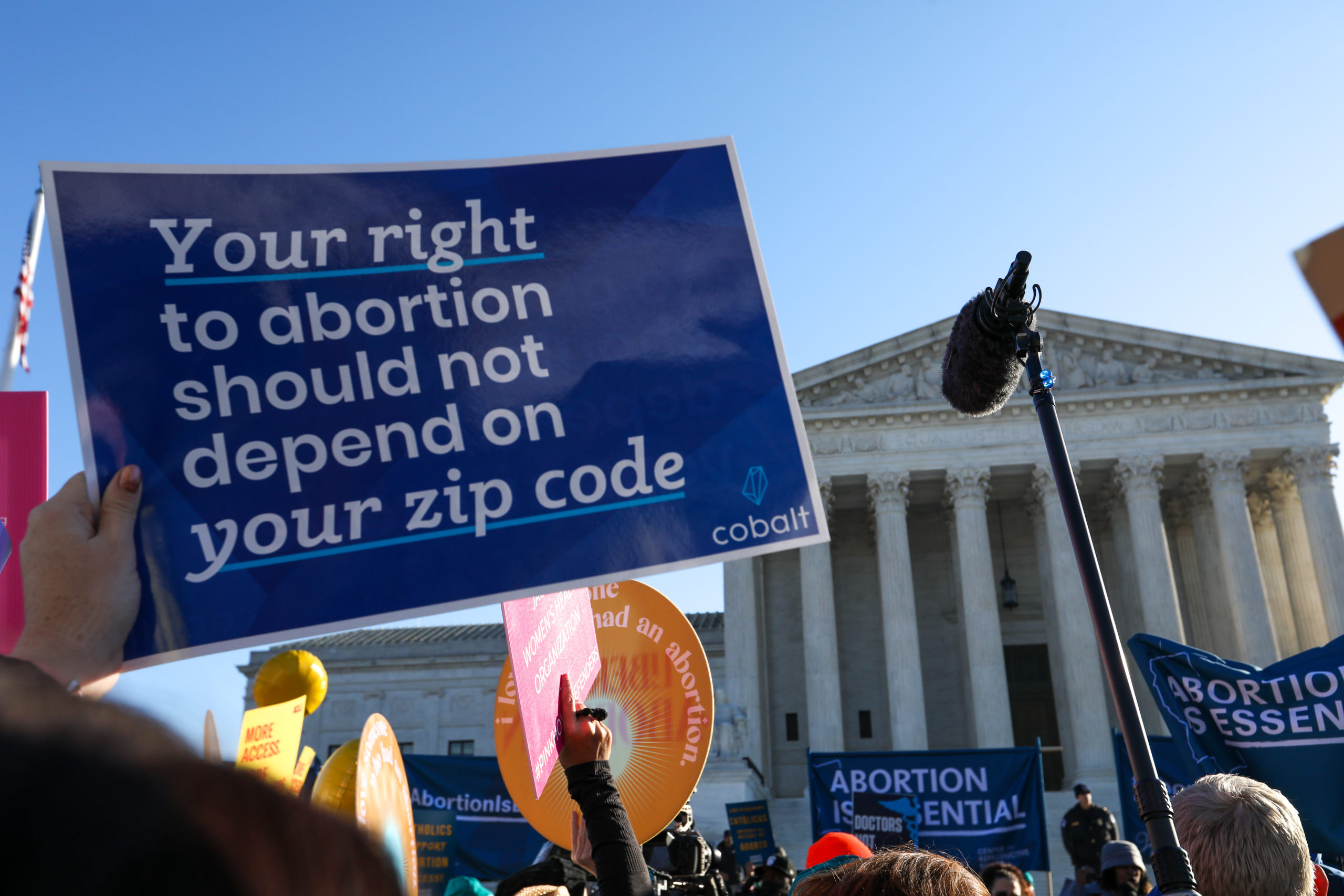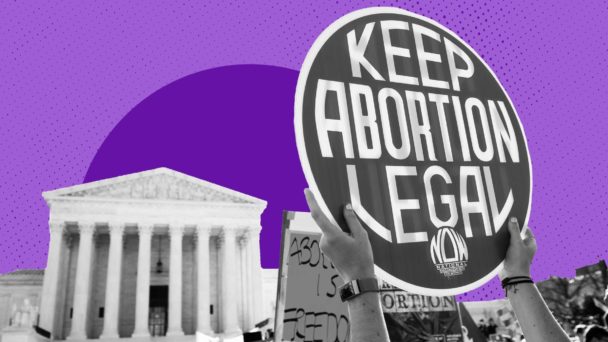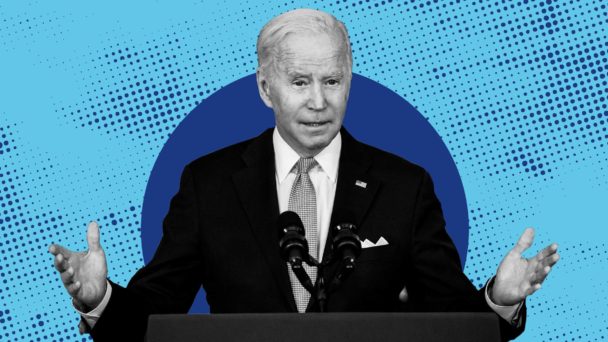When the Supreme Court voted to overturn Roe v. Wade in 2022, the five Republican justices in the majority had a sense of how dangerous their decision could be to their party’s electoral future. For as intensely as the conservative legal movement despised Roe, that decision’s compromise framework remained broadly popular among normal people: In May 2022, shortly after a draft of Justice Samuel Alito’s opinion in Dobbs v. Jackson Women’s Health Organization leaked to the press, a CNN poll found that two-thirds of Americans did not want the justices to overturn Roe. Over the preceding three decades of polling the question, the percentage of respondents who supported overturning Roe had never risen above 36 percent.
Near the end of his opinion, Alito sort of gestured at the burden he’d placed on his fellow Republicans, but just as quickly appealed to his solemn responsibility not to think about it. “We do not pretend to know how our political system or society will respond to today’s decision,” he wrote. “And even if we could foresee what will happen, we would have no authority to let that knowledge influence our decision.” The Court’s job, he continued, was to return “the issue of abortion to the people and their elected representatives,” and let the chips fall where they may.
I am guessing that, at least at first, Alito did not like where those chips ended up falling. In the two years after Dobbs, many Republican-controlled state legislatures passed draconian abortion bans, but where voters had the opportunity to decide the issue for themselves, the result was different. Every time abortion access was on the ballot, it won—not just in blue states like California and Vermont, but also in purplish states like Michigan and Ohio, and in red states like Kansas and Kentucky, where GOP-leaning electorates nonetheless repudiated their elected officials’ efforts to restrict abortion access.
The backlash to Dobbs also buoyed Democratic politicians in tight races, and helped the party outperform expectations and even expand its narrow Senate majority in the 2022 midterm elections. Exit polling in swing states like Michigan and Pennsylvania revealed that 27 percent of voters said that abortion was the most important factor in their decision, trailing only inflation (31 percent), and by only a few points.

(Photo by Brooks Kraft LLC/Corbis via Getty Images)
In last week’s election—the first presidential election since Dobbs—that edge disappeared. Once again, reproductive rights fared well: Of the ten states in which abortion was on the ballot, it passed in seven, and only “failed” in Florida because the 57 percent of people who voted to protect abortion rights fell just short of the state’s 60 percent supermajority requirement. But these numbers didn’t translate to electoral success for Democrats. Voters in Montana approved a state constitutional right to abortion care, but also ousted incumbent Democratic senator Jon Tester and went for Trump by 20 points. In Missouri, abortion rights won by 3 points, and Harris lost by 18. Voters in Nevada and Arizona, which President Joe Biden won in 2020, chose both to protect abortion rights and to elect the candidate who appointed the justices who made it necessary for them to protect abortion rights in the first place. In Florida, where a landslide-worthy majority of voters sought to create a constitutional right to abortion access over Governor Ron DeSantis’s strenuous objections, Trump beat Harris by nearly the same margin.
In 2021, a few months before the Court overturned Roe, Texas Republicans, unable to wait any longer, passed a near-total abortion ban with no exceptions for rape or incest. This put lawmakers at odds with the roughly 85 percent of their constituents who believe people should be able to access abortion care in these circumstances, and had some Democrats wondering if Texas would get, if not blue, at least a little more purple in 2024. Again, though, Republicans’ choice to enact a wildly unpopular abortion ban made no difference in terms of election outcomes: Trump improved on his margin of victory in Texas from 2020, and incumbent Republican senator Ted Cruz, who eked out a 1.5-point win over Beto O’Rourke in 2018, beat this year’s Democratic challenger, Colin Allred, by 9 points.
As with basically anything in politics, there is no single answer to the question of why and how Dobbs’s difference-making power evaporated so suddenly. On the campaign trail, Trump and his allies downplayed the issue, promising to veto a hypothetical national abortion ban and then pivoting to immigration, crime, or some combination thereof. Democratic politicians, meanwhile, apparently struggled to make the issue salient: Exit polls showed that just 14 percent of voters named abortion rights as their top priority, down from 27 percent in the 2022 midterms. In 2024 battleground states, nearly one in 5 voters—17 percent—placed more blame for the death of Roe on Biden, the president who supports codifying Roe, than they placed on Trump, the president who is responsible for killing it.
In an election where voters were most concerned about democracy (34 percent) and the economy (32 percent), you can do a little armchair psychology to explain the disconnect between pro-choice politics and Democratic success. Everyone shops for groceries, but for many people, abortion access feels like an abstraction, relatively speaking—something they don’t immediately need, and certainly don’t think about on a day-to-day basis. If you do not approve of your state lawmakers’ efforts to ban abortion, but are otherwise interested in Trump’s promises to make eggs cheaper overnight, ticket-splitting might feel like a rational response: Sure, you are voting to put a Republican in power, but you are also insuring against the risks of doing so by depriving him of the power to meddle with a right about which you care deeply.
(This logic requires purposefully ignoring the consequences for people other than oneself, as well as the very real possibility that a Trump Department of Justice enacts a de facto national abortion ban by reinterpreting the Comstock Act. But that’s the idea, at least.)

(Photo by Yasin Ozturk/Anadolu Agency via Getty Images)
None of this is to suggest that the pro-choice coalition has no political power left. Elections are complicated, and voters plainly do not always draw strong connections between candidates for office and policies that align with those candidates’ agenda. It may be the case that Dobbs still made a difference, just not a dispositive one this time—in other words, that if not for Dobbs, Harris would have lost swing states by even larger margins. If Trump and the Republicans push for a national abortion ban next year—or if the administration indeed uses the Comstock Act to function as one—maybe the anti-pregnancy surveillance state backlash of 2026 makes the anti-Dobbs backlash of 2022 look tame by comparison.
But at the very least, an unavoidable conclusion is that abortion rights were not salient enough for enough voters in 2024 as they were in 2022. Republicans did just enough to absolve themselves of responsibility for Roe’s demise, and Democrats did not do enough to saddle them with it. Alito and the justices who decided Dobbs placed a high-stakes bet that the short-term political repercussions, whatever they might be, would be worth the triumph of at last finishing their five-decade project to end the right to reproductive choice. They were right.





